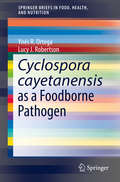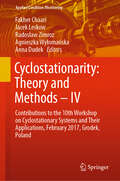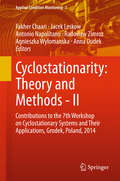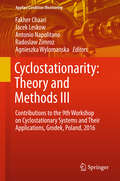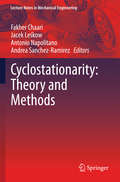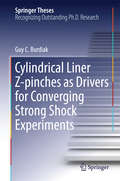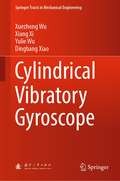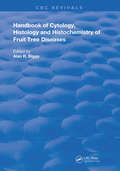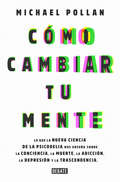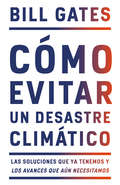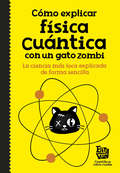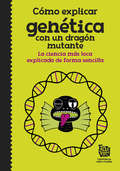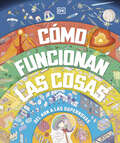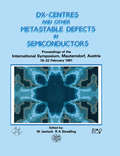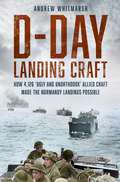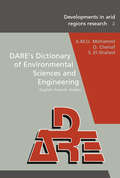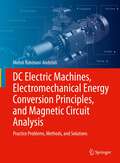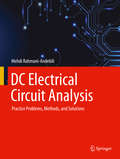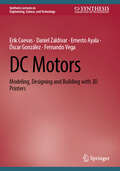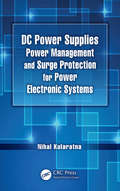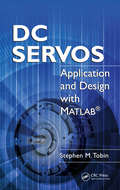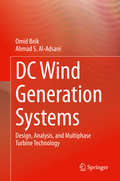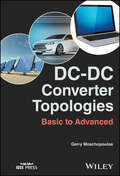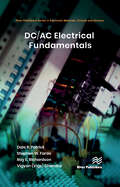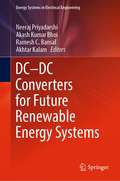- Table View
- List View
Cyclospora cayetanensis as a Foodborne Pathogen (SpringerBriefs in Food, Health, and Nutrition)
by Lucy J. Robertson Ynés R. OrtegaThis Brief provides a comprehensive overview of Cyclospora cayetanensis, a protozoan apicomplexan parasite that leads to outbreaks of traveler's diarrhea in consumers. The main characteristics of Cyclospora cayetanensis infection are covered, including documented outbreaks, regional patterns and statistics. Various transmission routes for this parasite are outlined, with a focus on foodborne transmission. A major focus of Cyclospora Cayetanensis As A Foodborne Pathogen is the detection of Cyclospora cayetanensis in different food matrices. Decontamination procedures for the occurrence of this parasite in all major food types are outlined in detail, as well as current risk assessment procedures and regulations. The difficulty in minimizing the risk of infection in fresh produce is covered, plus potential solutions for this problem. This Brief not only comprehensively covers the current state of foodborne Cyclospora cayetanensis but also looks to future challenges in the detection, prevention and removal of this parasite in foods.
Cyclostationarity: Contributions to the 10th Workshop on Cyclostationary Systems and Their Applications, February 2017, Grodek, Poland (Applied Condition Monitoring #16)
by Fakher Chaari Jacek Leskow Radoslaw Zimroz Anna Dudek Agnieszka WyłomańskaThis book gathers contributions presented at the 10th Workshop on Cyclostationary Systems and Their Applications, held in Gródek nad Dunajcem, Poland in February 2017. It includes twelve interesting papers covering current topics related to both cyclostationary and general non stationary processes. Moreover, this book, which covers both theoretical and practical issues, offers a practice-oriented guide to the analysis of data sets with non-stationary behavior and a bridge between basic and applied research on nonstationary processes. It provides students, researchers and professionals with a timely guide on cyclostationary systems, nonstationary processes and relevant engineering applications.
Cyclostationarity: Contributions to the 7th Workshop on Cyclostationary Systems And Their Applications, Grodek, Poland, 2014 (Applied Condition Monitoring #3)
by Antonio Napolitano Fakher Chaari Jacek Leskow Radoslaw Zimroz Agnieszka Wylomanska Anna DudekThis book reports on the latest advances in the analysis of non-stationary signals, with special emphasis on cyclostationary systems. It includes cutting-edge contributions presented at the 7th Workshop on "Cyclostationary Systems and Their Applications," which was held in Gródek nad Dunajcem, Poland, in February 2014. The book covers both the theoretical properties of cyclostationary models and processes, including estimation problems for systems exhibiting cyclostationary properties, and several applications of cyclostationary systems, including case studies on gears and bearings, and methods for implementing cyclostationary processes for damage assessment in condition-based maintenance operations. It addresses the needs of students, researchers and professionals in the broad fields of engineering, mathematics and physics, with a special focus on those studying or working with nonstationary and/or cyclostationary processes.
Cyclostationarity: Contributions to the 9th Workshop on Cyclostationary Systems and Their Applications, Grodek, Poland, 2016 (Applied Condition Monitoring #6)
by Antonio Napolitano Fakher Chaari Jacek Leskow Radoslaw Zimroz Agnieszka WylomanskaThis book gathers contributions presented at the 9th Workshop on Cyclostationary Systems and Their Applications, held in Gr#65533;dek nad Dunajcem, Poland in February 2016. It includes both theory-oriented and practice-oriented chapters. The former focus on heavy-tailed time series and processes, PAR models, rational spectra for PARMA processes, covariance invariant analysis, change point problems, and subsampling for time series, as well as the fraction-of-time approach, GARMA models and weak dependence. In turn, the latter report on case studies of various mechanical systems, and on stochastic and statistical methods, especially in the context of damage detection. The book provides students, researchers and professionals with a timely guide to cyclostationary systems, nonstationary processes and relevant engineering applications.
Cyclostationarity: Theory And Methods (Lecture Notes in Mechanical Engineering #3)
by Antonio Napolitano Fakher Chaari Jacek Leśkow Andrea Sanchez-RamirezIn the last decade the research in signal analysis was dominated by models that encompass nonstationarity as an important feature. This book presents the results of a workshop held in Grodek--Poland in February 2013 which was dedicated to the investigation of cyclostationary signals. Its main objective is to highlight the strong interactions between theory and applications of cyclostationary signals with the use of modern statistical tools. An important application of cyclostationary signals is the analysis of mechanical signals generated by a vibrating mechanism. Cyclostationary models are very important to perform basic operations on signals in both time and frequency domains. One of the fundamental problems in diagnosis of rotating machine is the identification of significant modulating frequencies that contribute to the cyclostationary nature of the signals. The book shows that there are modern tools available for analyzing cyclostationary signals without the assumption of gaussianity. Those methods are based on the ideas of bootstrap, subsampling and Fraction-of-time (FOT) models. The book is organised in two parts. The first part will be dedicated to pure theory on cyclostationarity. Applications are presented in the second part including several mechanical systems such as bearings, gears, with or without damages.
Cylindrical Liner Z-pinches as Drivers for Converging Strong Shock Experiments (Springer Theses)
by Guy C. BurdiakThe thesis represents the development of an entirely new experimental platform for generating and studying converging radiative shock waves. It was discovered that the application of large magnetic pressures to gas-filled cylindrical metallic tubes could sequentially produce three shocks within the gas. A comprehensive set of instrumentation was devised to explore this system in detail and an exceptionally thorough experimental and theoretical study was carried out in order to understand the source of the shock waves and their dynamics. The research is directed towards some of the most interesting topics in high energy density physics (HEDP) today, namely the interaction of HED material with radiation and magnetic fields, with broad applications to inertial confinement fusion (ICF) and laboratory plasma astrophysics. The work has already generated significant international interest in these two distinct research areas and the results could have significant importance for magnetic ICF concepts being explored at Sandia National Laboratories in the US and for our understanding of the very strong shock waves that are ubiquitous in astrophysics.
Cylindrical Vibratory Gyroscope (Springer Tracts in Mechanical Engineering)
by Xuezhong Wu Xiang Xi Yulie Wu Dingbang XiaoThis book introduces readers to the shell structure, operating principle, manufacturing process, and control theory for cylindrical vibratory gyroscopes. The cylindrical vibratory gyroscope is an important type of Coriolis vibratory gyroscope that holds considerable potential for development and application. The main aspects addressed include: operating principle and structure, theoretical analysis and modeling, dynamic analysis and modeling, manufacturing process, parameter testing methods, closed-loop control, and the error compensation mechanism in cylindrical vibratory gyroscopes.
Cytology, Histology and Histochemistry of Fruit Tree Diseases (Routledge Revivals)
by Alan R. BiggsPublished in 1993: This book provides a comprehensive discussion of the relationships between host plant structure and pathological anatomy. Topics include the structure and development of gum ducts, wound reactions, systemic invasion by bacterial pathogens, diseases caused by MLOs, and responses to cold temperatures.
Cómo cambiar tu mente: Lo que la nueva ciencia de la psicodelia nos enseña sobre la conciencia, la muerte, la adicción, la depresión y la transcendencia
by Michael PollanUna brillante y valiente investigación de Michael Pollan, autor de cinco best sellers de The New York Times, sobre la revolución médica y científica en torno a las drogas psicodélicas, y la fascinante historia de sus propias experiencias psicodélicas que le cambiaron la vida. Cuando Michael Pollan se propuso investigar por qué el LSD y la psilocibina (el ingrediente activo de las setas mágicas) brindaban un enorme alivio a las personas que padecían condiciones difíciles de tratar como el TEPT (trastorno por estrés postraumático), la depresión o la adicción, no tenía la intención de escribir lo que es indudablemente su libro más personal. Pero al descubrir cómo estas notables sustancias estaban mejorando la vida no solo de los pacientes con problemas de salud mental sino también de las personas que simplemente se enfrentaban a los altibajos de la vida cotidiana, decidió explorar los límites de la mente en primera y tercera persona. Así comenzó una singular aventura entorno a la experiencia de la conciencia alterada, así como una profunda inmersión en el estudio de la neurociencia más pionera y la toma de contacto con una prodigiosa comunidad subterránea de expertos psicodélicos. En esta ejemplar investigación periodística, Pollan revisa archivos históricos y documentos científicos para separar la verdad sobre estas misteriosas drogas de los mitos, la propaganda y el pánico moral que se ha ido acumulando desde los años sesenta, cuando un puñado de personajes rebeldes catalizaron una poderosa reacción contra lo que entonces era un prometedor campo de investigación. Sugerente, polémico y deslumbrante este libro es el resultado de un viaje a una nueva, emocionante e inesperada frontera de la percepción, de nuestra comprensión de la mente, del yo y de nuestro lugar en el mundo.
Cómo evitar un desastre climático
by Bill GatesEn este libro urgente y necesario Bill Gates propone un plan amplio, práctico y comprensible para conseguir que el mundo llegue a cero emisiones de gases de efecto invernadero para así evitar una catástrofe climática. Bill Gates ha pasado una década investigando las causas y efectos del cambio climático. Con la ayuda de expertos en los campos de la física, la química, la biología, la ingeniería, las ciencias políticas y las finanzas, se ha centrado en investigar exactamente qué se debe hacer para detener la deriva del planeta hacia un desastre ambiental. En este libro, además de explicar por qué debemos esforzarnos en lograr emisiones netas cero de gases de efecto invernadero, también detalla lo que debemos hacer para lograr este objetivo tan importante. Gates nos presenta una descripción clara de los desafíos que enfrentamos. A partir de su conocimiento sobre innovación y lo que se requiere para introducir nuevas ideas en el mercado, describe las áreas en las que la tecnología ya está ayudando a reducir las emisiones, dónde y cómo la tecnología actual puede funcionar de manera más eficaz, dónde es necesario desarrollar tecnologías de punta, y quién está trabajando en estas innovaciones esenciales. Finalmente, presenta un plan concreto y práctico para lograr el objetivo de cero emisiones, sugiriendo no solo las políticas que los gobiernos deberían adoptar, sino lo que nosotros, como individuos, podemos hacer para que nuestro gobierno, nuestros empleadores y nosotros mismos nos responsabilicemos esta crucial iniciativa. Como deja claro Bill Gates, llegar a cero emisiones no será sencillo ni fácil, pero si seguimos el plan que aquí propone, es una meta que se encuentra decididamente a nuestro alcance. Para detener el calentamiento global y evitar los peores efectos del cambio climático, los humanos deben dejar de agregar gases de efecto invernadero a la atmósfera. Si nada cambia, el mundo seguirá produciendo gases de efecto invernadero, el cambio climático seguirá empeorando y el impacto en los seres humanos con toda probabilidad será catastrófico. Pero las cosas pueden cambiar. Este libro trata sobre lo que se necesitará para lograrlo y por qué estoy convencido de que podemos hacerlo. -- Bill Gates
Cómo explicar física cuántica con un gato zombi: La ciencia mas loca explicada de forma sencilla
by Big Van Científicos Sobre RuedasSi eres de los que piensa que saber que el tiempo y el espacio son en realidad lo mismo no sirve para nada, o que lo único que le puede decir un protón a un electrón es que deje de ser tan negativo..., ¡has dado con la lectura que necesitabas! ¿Sabías que el teletransporte es real? ¿Que a veces un electrón tiene probabilidades de atravesar una pared? ¿Que dos partículas pueden influenciarse mutuamente aunque estén a años luz de distancia? ¿Y que las partículas cuánticas son como Clark Kent y disimulan sus poderes cuando los científicos las están observando? En Cómo explicar la física cuántica con un gato zombi descubrirás que, aunque no lo parezca, la física cuántica está por todas partes en nuestra vida cotidiana. Y además aprenderás... ...¡los principios más locos y flipantes de la física cuántica! ...¡experimentos low cost que puedes hacer en tu casa! ...que los científicos están un poco pallá, ¿lo sabías? ...y que los gatos tampoco son muy normales que digamos... Los lectores dicen...«Un libro de lo más instructivo a la par que divertido. Hace que la ciencia o la física sea divertida y comprensible para los mundanos. En serio, apto para jóvenes y adultos. Un libro que te hace pensar y si quieres aprender, lo harás.»
Cómo explicar genética con un dragón mutante
by Big Van Científicos Sobre RuedasSi crees que ADN son las siglas de un país muy muy lejano y que el bruto de la clase es el único que desciende del mono, ¡has dado con la lectura que necesitabas! Este divertido libro ilustrado explica la genética y la evolución... ¡de manera que lo entienda todo el mundo! ¿Sabías que existen los mutantes? ¿Que cualquier célula de tu cuerpo sabe más de ti que tus padres? ¿Y que algo llamado gen ha hecho que heredes la barbilla de tu bisabuelo (el guapo, claro)? En las páginas de Cómo explicar genética con un dragón mutante descubrirás... ...¡las leyes más extrañas y alucinantes de la genética! ...¡experimentos low cost que puedes hacer en tu casa! ...que los científicos están un poco pallá, ¿lo sabías? ...y que los pollos no son tan diferentes a los dragones...
Cómo funcionan las cosas (How Everything Works)
by DKCada página de esta enciclopedia increíblemente detallada y ambiciosa te guiará a través de la naturaleza y la tecnología que tienes a tu alrededor. Ilustraciones enormes llenan las páginas y muestran en todo detalle qué hay dentro de los objetos y los edificios para enseñar cómo funcionan, explicando principios básicos (como la fotosíntesis), así como conceptos más amplios (como la interacción de todos los seres vivos que hay en una selva tropical). Los capítulos cubren desde el cuerpo humano, las ciudades y la industria hasta el planeta Tierra; patrones de sueño, cocina, sistemas de aguas residuales, parques eólicos, esporas de hongos y placas tectónicas y mucho más.'Cómo funcionan las cosas' es perfecto para cualquiera que tenga curiosidad sobre temas de ciencia, tecnología y matemáticas, o sobre la naturaleza y el mundo moderno en general.Each page of this mind-blowingly detailed and ambitious encyclopedia will guide you through the natural world and the technology that surrounds you. Giant, page-filling illustrations take objects apart – or take the roofs and walls off buildings – to show you how they work, explaining both basic principles (such as photosynthesis) as well as broader concepts (like how all the living things in a rainforest interact). Chapters range from the human body to cities and industry, to planet Earth, taking in sleep patterns, cooking, sewage systems, wind farms, fungi spores, and plate tectonics along the way.'Cómo funcionan las cosas' is perfect for anyone who would like to know moro about STEM subjects at school or is simply curious about how nature and the modern world work.
D(X) Centres and other Metastable Defects in Semiconductors, Proceedings of the INT Symposium, Mauterndorf, Austria, 18-22 February 1991
by W Jantsch; R A StradlingSince the first reports on metastable defects in III-V and II-VI compound semiconductors appeared in the late 1960s, the number of reports on defects with metastable states has been growing at an ever increasing rate. D(X)-center and other metastability defects cause many technical problems that are exacerbated by the uncertainty and controversy surrounding the mechanisms that cause them. A lively mix of theoretical and experimental discussions, D(X)-Centres and other Metastable Defects in Semiconductors presents a timely investigation of these systems. The book discusses topics such as, the validity of negative or positive U models, as well as alternative views that challenge existing ideas. The richness and precision of experimental data now emerging in the field is chronicled as are new investigative techniques. Based on an INT symposium, this book provides a successful forum where an extraordinary variety of ideas, including new perspectives, are examined critically.
D-Day Landing Craft: How 4,126 ‘Ugly and Unorthodox’ Allied Craft made the Normandy Landings Possible
by Andrew WhitmarshThe contribution of landing craft and their crews to the 1944 Normandy campaign was enormous, and often overlooked. Most of the more than 132,000 Allied troops who landed on the beaches on D-Day came ashore from landing craft. The book examines why so many different types of landing craft were used in the operation; how they were built in both the UK and North America, over several years and with many competing war production requirements and operational needs. In the lead up to D-Day the Allies never seemed to have enough landing craft, their availability and production regularly discussed by top Allied leaders. This account is essential to anyone who wants to fully understand the course of D-Day, and the nature of Allied preparations for the campaign.
DARE's Dictionary of Environmental Sciences and Engineering: English-french-arabic
by A.M.O. Mohamed; D. Chenaf; S. El-ShahedIdeal for anyone interested in environmental issues, this dictionary draws together information from a variety of sources to better facilitate understanding of this wide-ranging subject. Detailed explanations help to promote clearer communication between professionals and provide a standardized reference point for technical translation, a quick-reference guide for researchers and professionals, and an invaluable knowledge base for cross-disciplinary readers from the fields of health, politics, economics and engineering.
DC Electric Machines, Electromechanical Energy Conversion Principles, and Magnetic Circuit Analysis: Practice Problems, Methods, and Solutions
by Mehdi Rahmani-AndebiliThis study guide is designed for students taking courses in DC electric machines, principles of electromechanical energy conversion, and magnetic circuit analysis. The textbook includes examples, questions, and exercises that will help electrical engineering students to review and sharpen their knowledge of the subject and enhance their performance in the classroom. Offering detailed solutions, multiple methods for solving problems, and clear explanations of concepts, this hands-on guide will improve student’s problem-solving skills and basic and advanced understanding of the topics covered.
DC Electrical Circuit Analysis: Practice Problems, Methods, and Solutions
by Mehdi Rahmani-AndebiliThis study guide is designed for students taking courses in electrical circuit analysis. The book includes examples, questions, and exercises that will help electrical engineering students to review and sharpen their knowledge of the subject and enhance their performance in the classroom. Offering detailed solutions, multiple methods for solving problems, and clear explanations of concepts, this hands-on guide will improve student’s problem-solving skills and basic understanding of the topics covered in electric circuit analysis courses.
DC Motors: Modeling, Designing and Building with 3D Printers (Synthesis Lectures on Engineering, Science, and Technology)
by Fernando Vega Erik Cuevas Óscar González Daniel Zaldivar Ernesto AyalaThis textbook provides readers with the knowledge and practical skills necessary to understand, design, and construct their own functional DC motors using 3D printing technology. The authors provide a clear and accessible introduction to the fundamental concepts of DC motors, explaining how they work, their different types, and their applications in a way that is easy for readers with limited technical background to understand. The book bridges the gap between theoretical knowledge and practical application, so that readers see how theoretical concepts translate into real devices. The authors guide readers through the process of building their own DC motors, using 3D printing technology. Readers can gain hands-on experience creating functional devices, using the step-by-step instructions, illustrations, and diagrams. The authors’ focus on 3D printing enables readers to explore the field of customization, so they can adapt motor designs to fit their specific needs, whether for a project, a prototype, or an application.
DC Power Supplies: Power Management and Surge Protection for Power Electronic Systems
by Nihal KularatnaAs we increasingly use electronic devices to direct our daily lives, so grows our dependence on reliable energy sources to power them. Because modern electronic systems demand steady, efficient, reliable DC voltage sources—often at a sub-1V level—commercial AC lines, batteries, and other common resources no longer suffice. New technologies also require intricate techniques to protect against natural and manmade disasters. Still, despite its importance, practical information on this critical subject remains hard to find. Using simple, accessible language to balance coverage of theoretical and practical aspects, DC Power Supplies, Power Management and Surge Protection details the essentials of power electronics circuits applicable to low-power systems, including modern portable devices. A summary of underlying principles and essential design points, it compares academic research and industry publications and reviews DC power supply fundamentals, including linear and low-dropout regulators. Content also addresses common switching regulator topologies, exploring resonant conversion approaches. Coverage includes other important topics such as: Control aspects and control theory Digital control and control ICs used in switching regulators Power management and energy efficiency Overall power conversion stage and basic protection strategies for higher reliability Battery management and comparison of battery chemistries and charge/discharge management Surge and transient protection of circuits designed with modern semiconductors based on submicron dimension transistors This specialized design resource explores applicable fundamental elements of power sources, with numerous cited references and discussion of commercial components and manufacturers. Regardless of their previous experience level, this information will greatly aid designers, researchers, and academics who, study, design, and produce the viable new power sources needed to propel our modern electronic world. CRC Press Authors Speak Nihal Kularatna introduces his book. Watch the video
DC Servos: Application and Design with MATLAB
by Stephen M. TobinFundamental to the control of mechatronic devices, the servomechanism applies feedback from the device in question to regulate its position, velocity, or some other physical attribute. Successful mastery of servo control requires an understanding of a wide range of engineering disciplines, making it difficult and time-consuming
DC Wind Generation Systems: Design, Analysis, and Multiphase Turbine Technology
by Omid Beik Ahmad S. Al-AdsaniThis book presents the design and operation of DC wind systems and their integration into power grids. The chapters give an in-depth discussion on turbine conversion systems that have been adapted for DC grids and address characteristics of wind turbines when converting kinetic wind energy to electrical energy, components associated with DC systems, and the design and analysis of DC grids. Additionally, the performance of medium voltage DC (MVDC) array grid and high voltage DC (HVDC) transmission grid connected via an offshore substation with DC/DC converters are also addressed. The book examines multiphase hybrid excitation generator systems for wind turbines and discusses its design and operation for all DC systems. The book provides an insight into the state-of-the-art technological advancements for existing and futuristic wind generation schemes, and provides materials that will allow students, researchers, academics, and practicing engineers to learn, expand and complement their expertise.
DC-DC Converter Topologies: Basic to Advanced (IEEE Press)
by Gerry MoschopoulosDC-DC Converter Topologies A comprehensive look at DC-DC converters and advanced power converter topologies for all skills levels As it can be rare for source voltage to meet the requirements of a Direct Current (DC) load, DC-DC converters are essential to access service. DC-DC power converters employ power semiconductor devices (like MOSFETs and IGBTs) as switches and passive elements such as capacitors, inductors, and transformers to alter the voltage provided by a DC source into the necessary DC voltage as is required by a DC load. This source can be a battery, solar panels, fuel cells, or a DC bus voltage fed by rectified AC utility voltage. As the many components of DC-DC converters can be differently arranged into circuit structures called topologies, there are as many possible circuit topologies as there are possible combinations of circuit elements. Focusing on DC-DC switch-mode power converters ranging from 50 W to 10kW, DC-DC Converter Topologies provides a survey of all converter topology types within this power range. General principles are described for each topology type using a representative converter as an example. Variations that can be found that differ from the example are then examined, with a helpful discussion of comparisons when relevant. A broad range of topics is covered within the book, from simple, low-power converters to complex, high-power converters and everywhere in between. DC-DC Converter Topologies readers will also find: A detailed discussion of four key DC-DC converter topologies Description of isolated two-switch pulse-width modulated (PWM) topologies including push-pull, half-bridge, and interleaved converters An exploration of high-gain converters such as coupled inductors, voltage multipliers, and switched capacitor converters This book provides the tools so that a non-expert will be equipped to deal with the vast array of DC-DC converters that presently exist. As such, DC-DC Converter Topologies is a useful reference for electrical engineers, professors, and graduate students studying in the field.
DC/AC Electrical Fundamentals
by Stephen W. Fardo Dale R. Patrick Vigyan (Vigs) Chandra Ray RichardsonThis book explores many essential topics in a basic and easy-to-understand manner. This book, and the accompanying Electronic Devices and Circuit Fundamentals, have been modified with significant updates in content. The books are developed using a classic textbook – Electricity and Electronics: A Survey (5th Edition) – as a framework. Both new books have been structured using a similar sequence and organization as previous editions. The previous edition of Electricity and Electronics: A Survey contained 18 chapters, 8 in the Electricity section and 10 in the Electronics section.This book has been expanded to include 19 chapters, further simplifying content, and providing a more comprehensive coverage of the content. The content has been continually updated and revised through new editions and by reviewers over the years. Additional quality checks to ensure technical accuracy, clarity and coverage of content have always been an area of focus.Each edition of the text has been improved through the following features: Improved and updated text content Improved usage of illustrations and photos Use of color to add emphasis and clarify content.
DC—DC Converters for Future Renewable Energy Systems (Energy Systems in Electrical Engineering)
by Akash Kumar Bhoi Akhtar Kalam Ramesh C. Bansal Neeraj PriyadarshiThe book presents the analysis and control of numerous DC-DC converters widely used in several applications such as standalone, grid integration, and motor drives-based renewable energy systems. The book provides extensive simulation and practical analysis of recent and advanced DC-DC power converter topologies. This self-contained book contributes to DC-DC converters design, control techniques, and industrial as well as domestic applications of renewable energy systems. This volume will be useful for undergraduate/postgraduate students, energy planners, designers, system analysis, and system governors.
